Request a Catalog
Lineage of the USMC Eagle, Globe and Anchor
Editor's Note: The world-famous Eagle, Globe and Anchor, the Marine Corps emblem, would come long after the Continental Marines fought for freedom during the American Revolution. Today, you can find officially licensed USMC products with the EGA at SGT GRIT.
At our website, grunt.com, you'll find unit apparel with the Eagle, Globe and Anchor, as well as watches, covers, rank pins and on our EGA veterans' license plates. We offer premium-quality watches with EGA emblems, water bottles, rocks glasses, lanterns, mugs and even pet bowls.
As your source for officially licensed USMC products, if we don't have it, Chesty wouldn't want it. Read the fascinating article below about the history and meaning of the Eagle, Globe and Anchor.
History of the USMC Eagle, Globe and Anchor
Submitted: June 22, 2010
By Tom McLeod, Historian, Museum of the Pacific
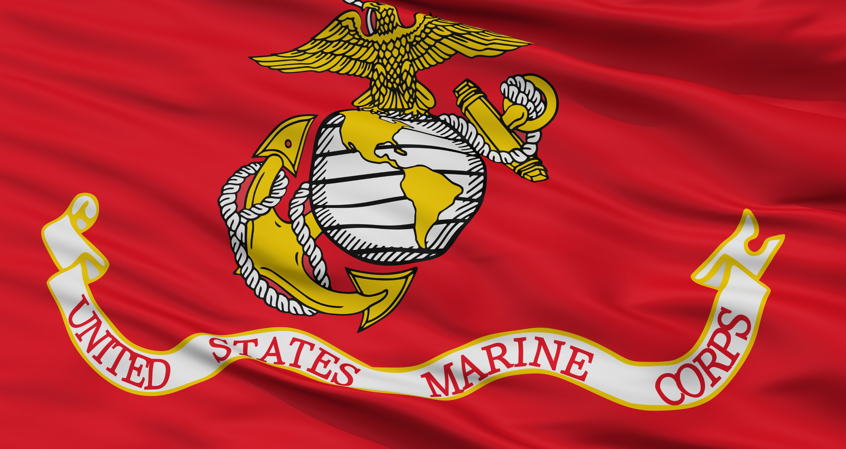
Notably one of the most worldwide recognized emblems is the U.S. Marine Corps Eagle, Globe, and Anchor - or EGA. The Marine logo has been the symbol of the Marines for more than a century.
Note: Eagle, Globe and Anchor are abbreviated as EGA for article space only. This is not meant as a demeaning abbreviation.
Continental Marines wore various uniforms during the American Revolution (1775-1783), without much standardization. Ships' captains or Marine officers in command provided uniforms for enlisted men.
One of the more famous pictures of the Revolutionary War was painted by Charles Waterhouse. It depicts American Marines wearing red uniforms, which were almost identical to those worn by British Royal Marines. Other common depictions of Continental Marines show them wearing a green swallow-tailed coat with white trousers. There were no insignia on these uniforms.
First references to any hat device appear in uniform regulations of 1804, when eagles were initially authorized by Lt. Col. Franklin Warton, Commandant of the Corps.
A letter to 1st Lt. Gale dated April 6, 1804, stated, "Pay very early attention to the caps mentioned by the Adjutant, also the die to have the Eagles ready."
His order referred to a "brass eagle on a square plate." Wharton's reference to 'eagles' is specific. Therefore, this first device was a separate, cut out eagle. It is the first insignia device of which we have tangible evidence.

This may have been similar to the device worn during the War of 1812 - an octagonal plate with an eagle, flags, drum and fouled anchor. The army did not introduce cap plates of this type until about 1811.
Eagles on army plates, many made by George Armitage of Philadelphia, were essentially identical to Marine plates. These brass cap plates showed an eagle's beak holding a banner, which read Fortitudine, the first motto of the Corps. The word is Latin for strength, or fortitude.
The Eagle's Claw
Researchers agree U.S.M.C. eagles probably first appeared soon after 1811. Under the eagle's claw on the metal plate was the word "MARINES." Earliest eagles had a double banner, held in the beak, which read "SEMPER FIDELIS."
November 1834 uniform regulations prescribed an eagle measuring approximately 3 to 3 1/2 in. to be worn on headgear. During the early 1840s, this device was changed again to an embroidered gold wreath encircling the letters "U.S.M." Shortly thereafter, an additional device was approved for wear on officers fatigue hats.
This was an embroidered wreath around a fouled anchor. A fouled anchor, for civilians reading this, simply means the anchor has a rope (or line) wrapped around it. The lack of a loose end on the rope symbolizes the enduring presence of the Marines and their close ties to the U.S. Navy.
By the time of the American Civil War (1861-1865), a hunting horn with a Germanic letter 'M' (for Marine) replaced earlier devices. Full dress insignia used a hunting horn attached to this U.S. shield with a laurel wreath, mounted separately underneath.
A Globe and 'Fouled' Anchors

EGA emblems, as know today, date from 1868 when General Zelin, the 7th Commandant, with the approval of the Secretary of the Navy, decided on a singly distinctive emblem.
This new emblem was centered around the globe, using an eagle and foul anchor Marine theme.
The fouled anchor has been an integral part of the full-sized insignia since 1868.
This was derived from British Royal Marine emblems. General Zelin's U.S. Marine Globe displayed the Western hemisphere. Royal Marine emblems used the Eastern hemisphere.
Eagles and fouled anchors were added to leave no doubt about the Corps' being both an American and maritime force. Incidentally, whenever the Corps has been involved in creating other Marine Corps, such as in Korea, China or Vietnam, they have adopted emblems similar to ours.
Despite numerous changes in size, color and design, this device has remained unchanged in concept to the present day. Few original 1868 devices survived. They are known only through drawings or poorly preserved photographs.
Officer devices had a metal globe and eagle attached over an embroidered anchor. These were made of stamped bronze or nickel with two wire prongs soldered to the back for attachment to caps. Full dress versions were attached to shields worn on the shako.
Stamped EGAs were worn on enlisted shoulder boards with dress uniforms later in the 19th century.
Early examples of enlisted devices are more common. Gilt brass enlisted fatigue cap EGAs were authorized in 1868, and dress cap EGA devices were approved in 1875. Nickel-plated brass ornaments were worn on shakos from 1875 to 1892.
A gilt brass wire-back cap device was authorized in 1868. This was used on kepi fatigue caps worn from 1859 to 1897. Bell crown undress caps were introduced in 1897. Wire-back gilt devices were then converted to screw-backs.
Perhaps the most interesting version of the insignia was worn on black parade helmets between 1892 and 1904. This device was 5 in. high and highly stylized. Officers' versions were even more ornate.
The "SEMPER FIDELIS" banner was made obsolete in 1904, due to breakage problems. Bronze service insignia for rolled edge campaign hats were authorized for enlisted ranks in 1908.
Montana Peaks and Droop-Wing Eagles
"Montana peak" campaign hats were authorized for U.S.M.C. use in 1912. Style changes included adding longitude (east-west) lines to existing latitude lines (north-south). Garrison caps were introduced in World War I and were adopted as a permanent uniform item.
Regulations of 1920 prescribed gilt finished and bronze screw back ornaments for caps, hats and collars, replacing World War I collar disks with a standard EGA, without rope.
'Droop-wing' eagles were authorized for officer and enlisted caps, hats and collar devices on May 25, 1925. 'Droop-Winged' eagles were made in 1930 for devices following the official emblem pattern of 1925 by the 13th Commandant, Major Gen. John Lejuene.
U.S.M.C. uniform regulations were again amended in 1936. 'Droop-winged' emblems were changed back to a straight wing design with approval of these new official emblems. According to legend, Droop-wing eagles looked like seagulls, instead of eagles." Longitude lines were also abolished. These changes are still the basic design of today's Marine emblem.
Allowing for cost cutbacks and metal shortages during World War II, service EGAs were primarily made of bronze, although the Marine Corps experimented with plastic devices. Plastic broke too easily and was soon discontinued.
Another major change to enlisted emblems was made in 1955. All new emblems were required to conform to a new and official Marine Corps Seal, approved by President Dwight D. Eisenhower in 1954. This change added the fouled anchor to the collar devices for enlisted wear. Officer's collar devices did not add the fouled anchor until 1962. Service insignia were made in a brownish finish to match leather items on uniforms.
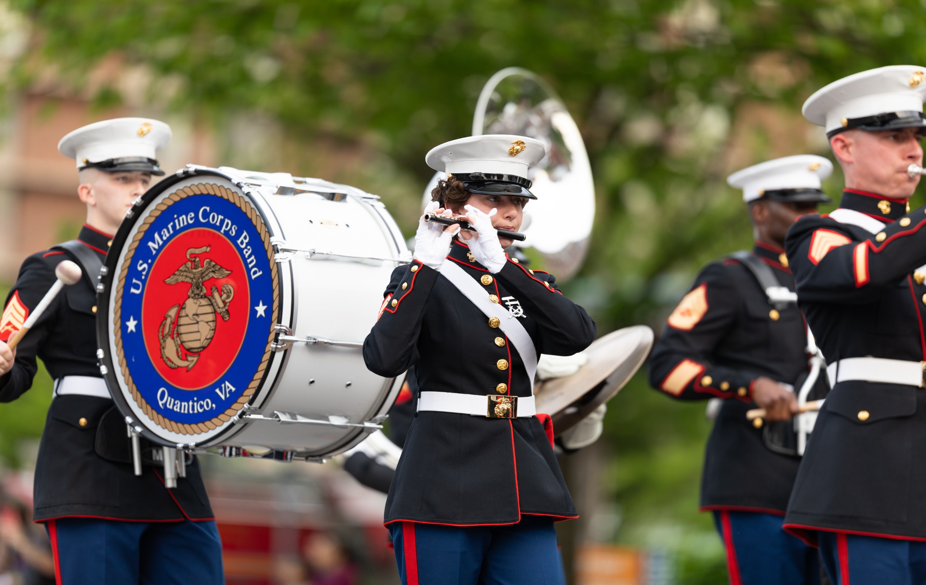
The last modification of the ornament, which brought them to present form, began with the publication of Marine Corps Orders (MCO) 1020.37 in June 4 1963. This changed the color of service ornaments from brown to black. This order stated, "In the area of uniform clothing, significant economy can be effected through use of black uniform accessories, without loss of utility and with a minimum change in appearance."
This was backed by a Department of Defense policy encouraging " achieving maximum economy through standard usage wherever possible." This order further provided for the color transition from brown to black uniform accessories such as shoes, socks, service cap frames, gloves and women's handbags.
Symbolism of the Eagle, Globe, Anchor
The depiction of eagle wings, spread over the globe, is the symbol of a proud nation. A land of justice and freedom loving people, ever reluctant to make war, but ever ready to fight for preservation of, or freedom for, oppressed people.
The globe stands as worldwide proof of America's history, which under a democratic government, means that people can have justice and live free. It is symbolic of the area covered by Marines in service. "Our flag is unfurled to every breeze, from dawn to setting sun. We have fought in every clime and place where we could take a gun."
The anchor is symbolic of the close association between the U.S. Marine Corps and U.S. Navy, on whose ships Marines have fought with skill and valor. The anchor is also a symbol of steadfast faithfulness, even unto death. Marines have always defended American principles, ideals and territory.
The rope entwined about the anchor is braided rope. Both rope and anchors were part of the embroidered patch, onto which the eagle and globe were secured on original officer insignia.
Fouled anchors originated with the British Royal Navy, who used them on common naval buttons. Rope was featured on U.S.M.C. officer and enlisted headgear ornaments, beginning in 1868. Rope was added to enlisted collar devices in 1955, but was not part of officer collar devices until 1962.
Regarding enlisted collar EGAs, Marines did not wear insignia on collars until 1892, when uniform regulation authorized their wear, if only for officers and enlisted Marine Band members. The first appearance of collar devices for enlisted Marines appeared during World War I.
Marine brigades in France wore U.S. Army uniforms, which provided for collar devices to be worn. The Army had numerous round disc devices, which designated both branch of the army (infantry, artillery etc.) and their units.
By an order of the A.E.F. dated January 1918, Marines in France were required to wear the standard four-pocket U.S. Army uniform until the war's conclusion. To differentiate uniforms, Marines cut and sewed peaked 'Marine cuffs' on lower sleeves of their uniforms.
When Assistant Secretary of the Navy Franklin D. Roosevelt visited France in 1918, he authorized Marine enlisted men to wear discs depicting the Eagle, Globe and Anchor. These collar insignia were prescribed for enlisted uniforms on Aug. 5, 1918, when Marine Brig. Gen. W.C. Neville authorized the 4th Brigade to procure 1-in. round discs to distinguish Marines from other services.
The only difference in the Marine's disc was the addition of the EGA, as opposed to the Army's "U.S." and unit or rate designation. These initial disks were bronze for the service collar. A short production run of gilt devices was made for dress collars. Only Marines serving in France and Germany wore these during the remainder of 1918 and 1919.
Disks were abolished with implementation of enlisted 1920s pattern EGA collar devices. These new style EGA collar insignia were authorized for wear on enlisted uniforms by regulations promulgated on Feb. 25, 1920. This basic form has continued in use.

Marine Buttons
Anchors first appeared on buttons of Marine officer uniforms during the American Revolution.
These featured the eagle, with a shield on the left wing, enclosing a fouled anchor. This became the basis of what is now known as the 'Marine button.' On Oct. 26, 1798, the button's prescribed use was extended to enlisted men.
During the French Naval War (1798-1801), the undress uniform of officers was a plain blue flock coat with buttons on the lapels.
George Harrison's letter to Commandant Warton on Oct. 12, 1804, stated, "Armitage's" die is worn out and he is about to have another executed, he wishes your order as to the button you will prefer. Enclosed are patterns for your selection….he is of the opinion that you had better do away with stars and have an anchor on the button."
In his reply on Oct. 19, 1804, Warton stated, "It will be out of my department to make an alteration in the buttons. Please order them to be the former (Navy) pattern."
Research indicates naval buttons were used as late as May 15, 1921. However, an order dated Aug. 3,1821, prescribes Marine buttons for officers. The device is practically the same as in use today.
Officer EGAs are made in a four-part assembly (eagle-globe-anchor-rope). Continents are sometimes applied over the globe. Enlisted EGAs are a one-piece construction.
China Marine EGAs usually differ due to the addition of two fasteners vs. single fasteners of others. Beginning with the Korean War (1951-1955), enlisted double clutch service emblems were worn on khaki or tropical worsted shirts for summer service uniforms.
In 1922, all service cap visors were changed from tan to russet (nut) brown, followed by another change to black in 1963.
EGAs were made in numerous foreign countries, including, but not limited to: England (particularly J.R. Gaunt), France (World War I only), China (custom work for marines who 'went Asiatic') and Australia (World War II after Guadalcanal).
American manufacturers include: American Emblem Co., 'Bailey, Banks & Biddle,' Breuninger, Gemsco, Hillborn-Hamburger, Horstman, Imperial, N.S. Meyer, Officer's Equipment Co., Ronson, Vanguard and Viking.
EGA Collectors
For collectors, early EGAs bring a premium on today's market. Beware of numerous fake EGAs. Unscrupulous dealers and jewelers have reproduced forgeries. Only an expert can distinguish the difference. Caveat Emptor: "Let the buyer beware!"
Credits: Researching this article took many hours. It would not have been possible without the input, help and proofreading of EGA authorities/authors Steve Orgill and Rocklin Lyons. Their guidance made this article possible.
Book References: Uniforms of the American Marines 1775-1829 by Major E.N. McClellen, USMC and The Eagle, Globe and Anchor 1868-1968 by Col. John A. Driscoll, USMC.
Copyright for publication release in writing by: Tom McLeod, Historian, 1st Marine Division Assn. 10 January 2004
Tom McLeod
Historian, Museum of the Pacific
1st Marine Division Association
Texarkana, TX, 75503
For more stories about the history of the U.S. Marine Corps, read our Marine Corps Stories at SGT GRIT.


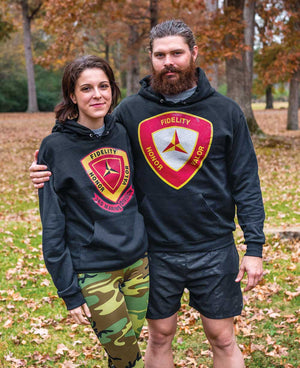
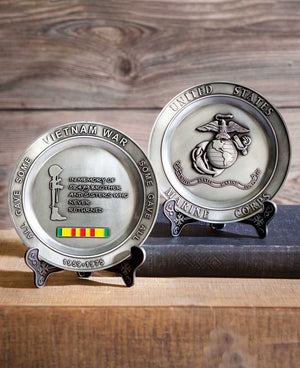
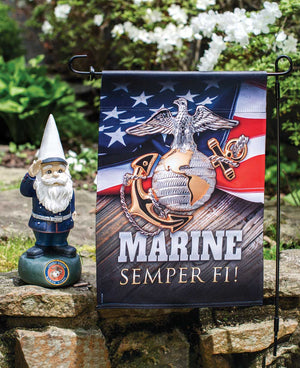
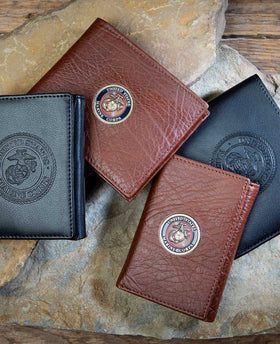
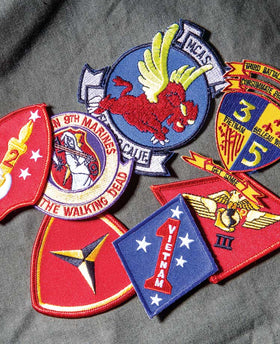
Comments
Leave a comment